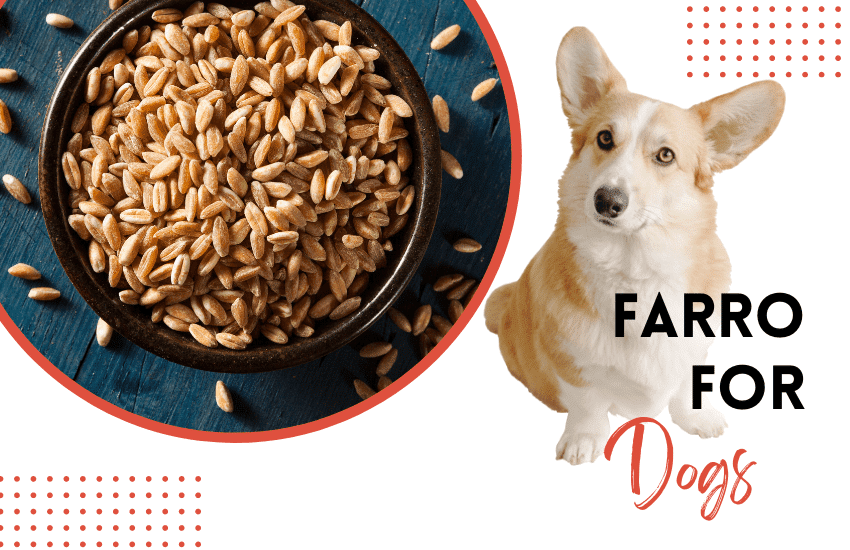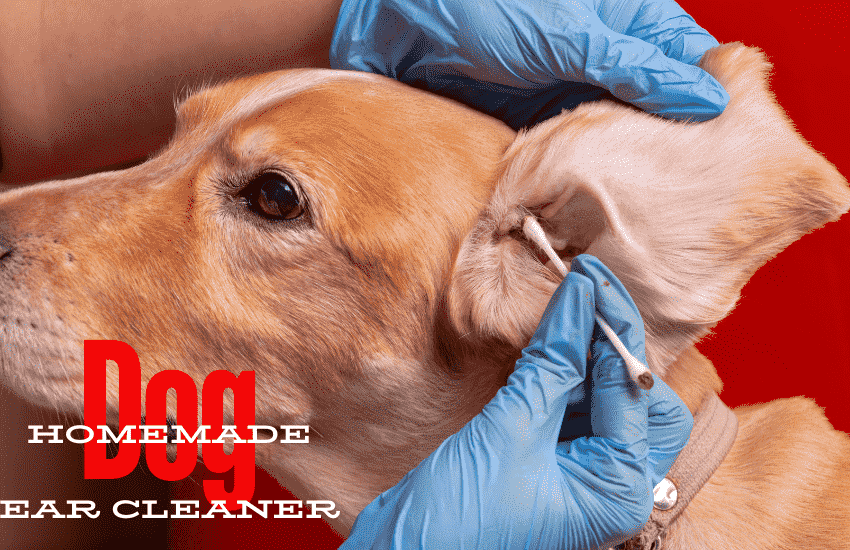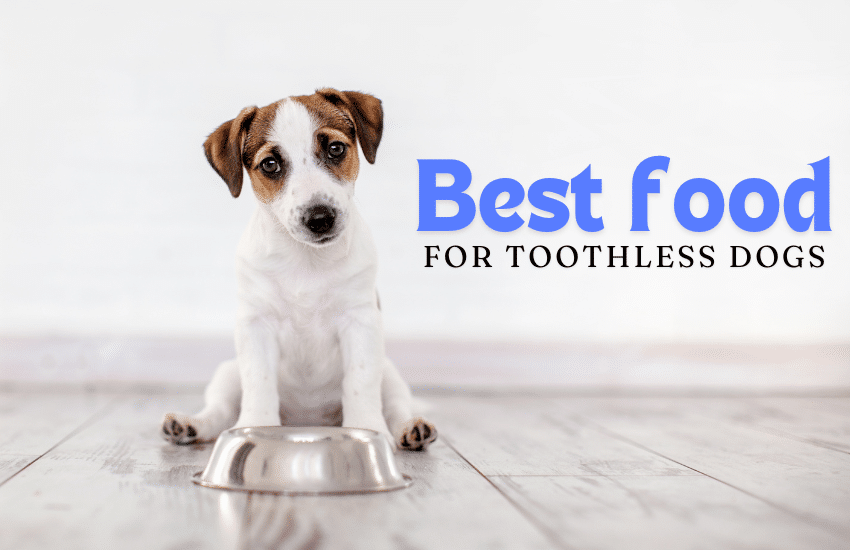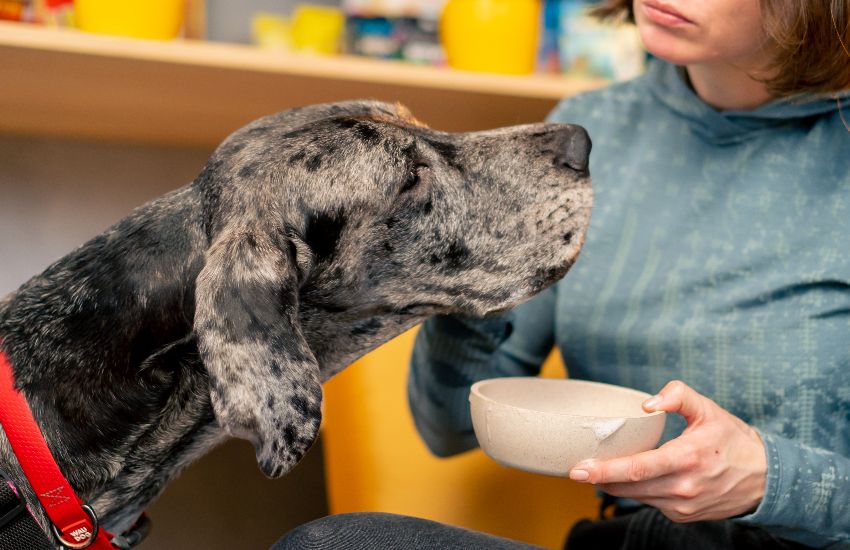Can dogs eat Farro? Yes, dogs can eat farro in moderation. It should be cooked and served plain to avoid any digestive issues.
Farro, a nutritious whole grain, is gaining popularity among health-conscious individuals and pet owners alike. It’s packed with fiber, protein, and vitamins that can benefit your dog’s diet when introduced correctly. Introducing new foods to your dog’s diet should always be done gradually to monitor any adverse reactions.
Farro’s high fiber content aids in digestion, but it’s essential to ensure it doesn’t constitute the majority of their diet to prevent nutritional imbalances. As pet owners continually seek healthier dietary options for their furry friends, incorporating whole grains like farro can be a beneficial addition. Always consult with a veterinarian before making significant changes to your pet’s diet to ensure it aligns with their nutritional needs.
Nutritional Value Of Farro
Many pet owners wonder what foods their canine friends can safely enjoy. Farro, an ancient grain, sparks interest due to its rich nutritional profile. This whole grain offers a host of benefits, but is it suitable for dogs? Let’s dive into the nutritional value of Farro and explore how it can fit into a dog’s diet.
Key Nutrients In Farro
Farro is a powerhouse of nutrition, boasting a variety of essential vitamins and minerals. Known for its high fiber content, this ancient grain also packs a punch with protein, which is vital for a dog’s muscle development. Here’s a closer look at the key nutrients found in Farro:
- Complex Carbohydrates – Provides sustained energy for active dogs.
- Fiber – Aids in healthy digestion and regular bowel movements.
- Protein – Supports muscle growth and repair.
- Vitamins – Farro is rich in B vitamins, which are crucial for energy metabolism and brain function.
- Minerals – Contains magnesium, zinc, and iron, important for immune health, enzyme function, and oxygen transport.
Below is a table summarizing the nutrients in a 100-gram serving of cooked Farro:
| Nutrient | Amount |
|---|---|
| Calories | 100 |
| Protein | 4g |
| Fiber | 3.5g |
| Carbohydrates | 26g |
| Vitamins and Minerals | Varied amounts |
While Farro offers these nutrients, portions should be appropriate for a dog’s size and dietary needs. Always consult a vet before introducing new foods into your dog’s diet.
Health Benefits Of Farro For Humans
For humans, Farro’s nutritional benefits are wide-ranging and impressive. This grain has been a staple in Mediterranean diets for centuries, and for good reason. Here are some notable health benefits:
- Weight Management – High fiber content promotes fullness, reducing overeating.
- Blood Sugar Control – The complex carbs in Farro help maintain steady blood sugar levels.
- Heart Health – B vitamins, magnesium, and fiber work together to support a healthy heart.
- Digestive Health – Fiber aids in preventing constipation and supports a healthy gut microbiome.
- Antioxidant Properties – Contains antioxidants that combat free radical damage.
Consuming Farro as part of a balanced diet can offer these benefits and more. It’s a versatile grain that can be enjoyed in salads, soups, or as a side dish. Its chewy texture and nutty flavor make it a delicious addition to any meal. Remember, moderation is key to maintaining a healthy diet.
Can Dogs Eat Farro?
Can dogs eat farro? This question might cross your mind as you enjoy a bowl of this ancient grain. Farro is packed with nutrients and has become a popular health food for humans. But what about our furry friends? Let’s find out if dogs can safely enjoy farro as part of their diet.
Understanding A Dog’s Diet
Dogs need a balanced diet to stay healthy. This includes proteins, fats, carbohydrates, vitamins, and minerals. While dogs are often considered carnivores, they are more accurately described as omnivores. This means they can eat both meat and plants. Here’s a quick look at what makes up a good diet for dogs:
- Protein: Essential for growth and repair of body tissues.
- Fats: Provide energy and help absorb vitamins.
- Carbohydrates: Another energy source, also aid in digestion.
- Vitamins and Minerals: Important for maintaining health and supporting the immune system.
While commercial dog foods are formulated to meet all of these requirements, some owners like to add variety with safe human foods. This is where farro might come in. It’s a complex carbohydrate that can offer energy and fiber.
Potential Benefits Of Farro For Dogs
Farro is a whole grain that could offer some benefits to dogs if incorporated into their diet correctly. Here’s what farro can offer:
- Fiber: Aids in digestion and can help keep your dog regular.
- Protein: Supports muscle growth and repair.
- Vitamins: B vitamins in farro support energy production and brain health.
- Minerals: Contains magnesium, zinc, and iron, which are crucial for various bodily functions.
These nutrients make farro a potentially beneficial addition to a dog’s diet. However, it’s important to ensure that any new food does not disrupt the balance of their overall nutritional intake.
Risks And Considerations
Although farro can be healthy, there are risks and considerations to keep in mind:
- Allergies: Some dogs might be allergic to grains.
- Portion Size: Too much farro can lead to weight gain.
- Cooking Method: Farro should be cooked plain, without harmful additives like garlic or onions.
- Digestibility: Not all dogs digest grains well.
Always introduce new foods slowly and watch for any signs of digestive upset or allergic reactions. Consult with a vet before making significant changes to your dog’s diet.
Types Of Farro Dogs Can Eat
Farro comes in different forms, and not all are suitable for dogs. Here are the types you can consider:
| Type | Safe for Dogs? |
|---|---|
| Whole Farro | Yes, but must be cooked |
| Pearled Farro | Yes, cooks faster and is easier to digest |
| Farro Flour | Can be used in dog treats in moderation |
Always serve farro plain, without spices or sauces. Stick to small portions to prevent digestive issues and ensure it’s fully cooked to improve digestibility.
Preparing Farro For Dogs
Can dogs eat farro? This ancient grain, similar to wheat, can be a nutritious addition to your furry friend’s diet. Packed with fiber, protein, and vitamins, farro provides energy and supports a healthy digestive system. But before sharing this wholesome grain with your dog, it’s crucial to prepare it correctly. Safety and simplicity are key when introducing new foods to your pet’s meal plan. Let’s explore the best ways to cook farro for dogs, ensuring it’s both delicious and easy to digest.
Cooking Methods
When preparing farro for dogs, the cooking method matters. The goal is to make it soft and easy to chew. Begin by rinsing the farro under cold water to remove any dust or impurities. Soak it for at least 30 minutes, which helps in reducing cooking time and improving digestibility. After soaking, drain the farro and follow these steps:
- Boiling: Place the farro in a pot and add three cups of water for every cup of grain. Bring to a boil, then reduce the heat and simmer. Cook until the farro is tender, which usually takes about 30 minutes.
- Pressure Cooking: If you have a pressure cooker, combine the farro with water at a 1:2 ratio. Cook on high pressure for about 10 minutes. Let the pressure release naturally before opening the lid.
- Slow Cooking: For a slow cooker, mix one cup of farro with three cups of water. Set it on low and let it cook for about 4 hours, or until the desired tenderness is achieved.
Remember, always cool the farro to room temperature before serving it to your dog. You can store cooked farro in the fridge for up to five days, making it easy to add to your dog’s meals throughout the week.
Seasoning And Additives To Avoid
While farro is beneficial for dogs, certain seasonings and additives can be harmful. It’s essential to keep the farro plain and free from these ingredients:
| Additive | Reason to Avoid |
|---|---|
| Salt | Excessive sodium can lead to dehydration and other health issues. |
| Onions/Garlic | They can cause anemia and are toxic to dogs. |
| Butter/Oil | High fat content can lead to obesity and pancreatitis. |
| Artificial Sweeteners | Xylitol, for instance, is extremely toxic to dogs. |
Stick to plain cooked farro. Your dog’s health comes first, and these harmful ingredients can cause more harm than good.
Home Recipes For Your Dog
Creative yet simple recipes can make farro a delightful treat for your dog. Here are some homemade ideas:
- Fruit and Farro Mix: Combine cooked farro with dog-safe fruits like apples or blueberries. Ensure the fruits are cut into small, manageable pieces.
- Veggie Farro Delight: Mix farro with steamed vegetables such as carrots, peas, or pumpkin. Always chop the veggies into bite-sized pieces.
- Farro and Meatball Mash: Prepare lean ground turkey or chicken meatballs. Mix them with cooked farro for a protein-packed meal.
These simple recipes provide a nutritious and enjoyable way to include farro in your dog’s diet. Serve them in moderation and always watch for any allergic reactions or digestive issues.
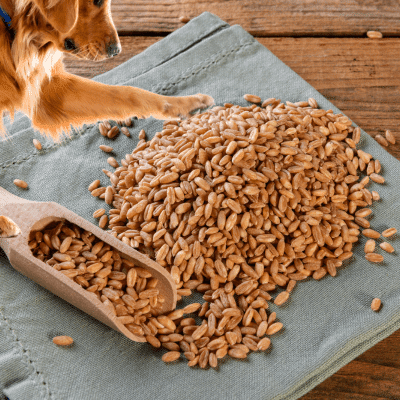
Feeding Farro To Dogs
Have you ever wondered if your furry friend can munch on farro? Farro is a type of whole grain that’s packed with nutrients, and it’s not just good for humans! Yes, dogs can eat farro, but there are some things you need to know before serving it up. Feeding farro to dogs can be a healthy addition to their diet when done correctly.
Portion Control
When it comes to feeding farro to your dog, the key is portion control. Dogs have different nutritional needs than humans, so it’s important to get the portion right. Here’s how to manage farro portions for your dog:
- Start with a small amount to see how your dog reacts.
- Keep the serving sizes small – a spoonful is enough for a start.
- Consult your vet for the right serving size based on your dog’s weight and health.
Remember, farro should only be a small part of your dog’s diet. Here’s a simple table to help you understand the portions:
| Dog Size | Farro Portion |
|---|---|
| Small | 1 teaspoon |
| Medium | 1 tablespoon |
| Large | 2 tablespoons |
Incorporating Farro Into A Dog’s Diet
Introducing farro into your dog’s diet should be a gradual process. Here’s how to incorporate farro into a dog’s diet:
- Begin by mixing a small amount of cooked farro with their regular food.
- Ensure the farro is plain and cooked without any additives or seasoning.
- Watch for any signs of digestive upset or allergies.
As a nutritious grain, farro can offer your dog benefits such as:
- Extra fiber for healthy digestion.
- Vitamins like B-complex for energy.
- Proteins for muscle health.
Here are some creative ways to add farro to your dog’s meals:
- Mix it with lean meats like chicken or turkey.
- Combine it with dog-friendly vegetables for a tasty stew.
- Use it as an occasional treat, not a daily staple.
Always observe how your dog feels after eating farro. Make sure to talk to your vet before making any major changes to your dog’s diet.
Alternatives To Farro For Dogs
Many dog owners wonder if farro, a type of ancient wheat grain, is a good choice for their canine friends. While farro can offer nutritional benefits, it’s important to consider alternatives that may be more suitable for a dog’s digestive system. This section explores various grains and other nutritious options that can serve as healthy substitutes for farro in a dog’s diet.
Safe Grains For Dogs
Dogs can enjoy a variety of grains as part of a balanced diet. These grains should be cooked properly to aid digestion. Here’s a list of dog-friendly grains:
- Rice: Easy to digest and often recommended for dogs with upset stomachs.
- Oats: Rich in fiber and helps keep cholesterol levels in check.
- Barley: Full of nutrients and can help maintain a healthy weight.
- Quinoa: A protein-packed grain that’s also gluten-free.
Let’s compare these grains in a table to see their benefits:
| Grain | Benefits | Protein Content | Fiber Content |
|---|---|---|---|
| Rice | Highly digestible, low in fat | Low | Low |
| Oats | Good for skin and coat health | Moderate | High |
| Barley | Supports gut health | Low | High |
| Quinoa | Contains all nine essential amino acids | High | High |
Other Nutritious Options
Besides grains, dogs can benefit from a variety of other nutritious foods. These should be introduced gradually to ensure they suit your dog’s stomach. Some great alternatives include:
- Pumpkin: Great for digestion and low in calories.
- Sweet potatoes: Packed with vitamins A and C.
- Carrots: Good for dental health and a low-calorie treat.
- Green beans: Full of iron and vitamins, and also low in calories.
These foods not only provide essential nutrients but also add variety to your dog’s diet. Here’s a quick nutrient breakdown:
| Food | Key Nutrients | Calories |
|---|---|---|
| Pumpkin | Fiber, Vitamin A | Low |
| Sweet Potatoes | Vitamins A and C | Moderate |
| Carrots | Vitamin A, Fiber | Low |
| Green Beans | Vitamin C, Iron | Low |
Always remember, moderation is key. Introduce new foods slowly and watch for any signs of allergies or digestive upset.
Consulting A Veterinarian
Is farro safe for dogs to eat? This question concerns many pet owners. Farro, a nutritious grain, seems like a healthy choice. Yet, every dog is unique. Consulting a veterinarian before introducing new foods into your dog’s diet is crucial. This step ensures the well-being of your furry friend. A vet can provide tailored advice based on your dog’s health, breed, and dietary needs.
Importance Of Professional Advice
Seeking a vet’s opinion before feeding farro to dogs is vital. Vets have deep knowledge about canine nutrition. They understand how different foods can affect a dog’s health. Here’s why professional advice is crucial:
- Allergies: Vets can identify if farro is safe for dogs with allergies.
- Portion Sizes: They determine the right amount of farro for a dog’s diet.
- Nutritional Balance: Vets ensure farro is a beneficial addition to a dog’s meal plan.
Farro’s impact on dogs can vary. A vet assesses if it’s suitable for your pet. They consider the dog’s current diet, age, weight, and activity level. Vets also check for any health issues that might conflict with farro. For example, dogs with grain sensitivities might need to avoid it.
| Factor | Consideration |
|---|---|
| Age | Puppies and senior dogs have different dietary needs. |
| Weight | Overweight dogs may require special diets. |
| Activity Level | Active dogs may benefit from farro’s energy-boosting carbs. |
Signs Of Allergic Reactions In Dogs
Dogs, like humans, can have allergic reactions to certain foods. Noticing signs early is important for your dog’s health. Here are common symptoms of allergic reactions:
- Itching: Dogs may scratch or bite their skin more than usual.
- Swelling: Look for swelling around the face, ears, or paws.
- Digestive Issues: Vomiting or diarrhea can indicate a problem.
Keep an eye on your dog after trying farro. If you see these signs, stop feeding it and contact your vet right away. They can provide immediate help and prevent more serious issues. Remember, quick action can save your dog from discomfort or worse.
| Sign | Action to Take |
|---|---|
| Itching | Check for redness or rashes and call the vet. |
| Swelling | Monitor for breathing difficulties and seek help. |
| Digestive Issues | Provide water and contact the vet for advice. |
Frequently Asked Questions
What Grains Should Dogs Avoid?
Dogs should generally avoid grains like wheat, corn, and soy, which can cause allergies or sensitivities. Opt for grain-free diets or alternative grains such as rice, barley, or oats if tolerated.
Is Farro An Inflammatory Grain?
Farro is not considered an inflammatory grain. In fact, it often forms part of anti-inflammatory diets due to its high fiber content and nutrient profile.
What Is The Most Digestible Grain For Dogs?
Rice is the most digestible grain for dogs, offering easy-to-process carbohydrates for energy. Its gentle nature suits sensitive stomachs, making it a top choice for canine diets. Always ensure it’s well-cooked before serving to your pet for optimal digestion and nutritional benefits.
What Grains Can I Cook For My Dog?
Safe grains for dogs include brown rice, barley, quinoa, and oats. Cook them thoroughly before serving to ensure easy digestion. Always consult with a vet to tailor the diet to your dog’s specific needs.
Conclusion
To sum up, farro is a safe and nutritious option for your dog in moderation. Always cook it plain and monitor portion sizes. Introducing this grain gradually helps avoid any digestive upset. Remember, a balanced diet is key to your pet’s health.
So, feel free to include farro as a wholesome treat.


